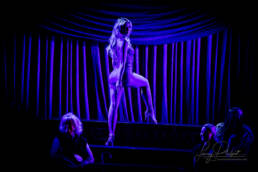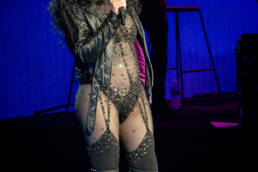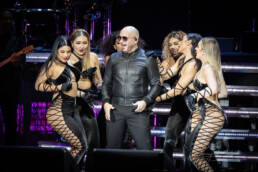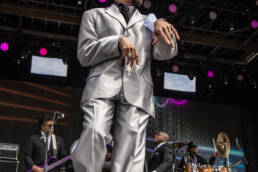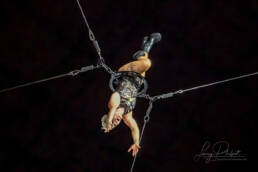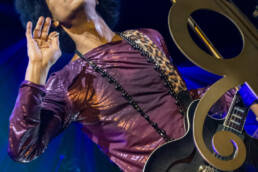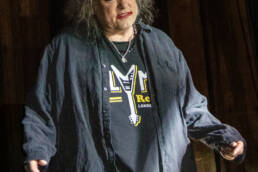Paula Abdul: The Dancer Who Choreographed Her Own Destiny
Imagine a pint-sized dreamer in California, twirling across a living room floor, her heart racing to the beat of a song only she could hear. For Paula Abdul, music and movement weren’t just passions—they were her compass, guiding her from a shy kid with big dreams to a pop sensation who ruled the airwaves. Her story, a blend of sweat, sparkle, and unshakable spirit, is a testament to the power of stepping into the spotlight on your own terms.

The Spark That Started It All
Paula’s primary motivator was dance—a language she spoke before she sang. Born Paula Julie Abdul on June 19, 1962, in San Fernando, California, she grew up in a middle-class Jewish family, her dad a livestock trader, her mom a pianist’s assistant. At four, she saw Gene Kelly in Singin’ in the Rain and knew: movement was her muse. Shy and small—barely five feet—she found confidence in jazz and tap classes, dreaming of Broadway. Music came later, a natural extension of rhythm, but it was choreography that lit her fire. She’s said dance saved her from feeling invisible, pushing her to audition, create, and eventually sing her way to stardom. That spark turned a Valley girl into a global name.
The Full Story: From Laker Girl to Pop Princess
Paula’s journey kicked off at Van Nuys High, where she cheered and danced her way to notice. At 18, she snagged a spot with the Los Angeles Lakers’ cheer squad, the Laker Girls, and by 1982, she was their head choreographer—whipping routines into gold during the Showtime era. Her moves caught the eye of The Jacksons, who hired her for their 1984 “Torture” video. Soon, she was staging Janet Jackson’s Control—hits like “Nasty” bearing her stamp.
But Paula craved the mic. In 1987, she signed with Virgin Records, pouring her dance-floor savvy into Forever Your Girl (1988). It was a slow burn—took a year to hit—but “Straight Up” catapulted her to No. 1. At 26, she was a pop darling, blending R&B grooves with peppy hooks. Spellbound (1991) kept her aloft with “Rush, Rush,” but by 1995’s Head Over Heels, grunge and hip-hop dimmed her shine. A 1996 plane crash left her with chronic pain, stalling music, though she fought back via choreography gigs.
The 2000s brought reinvention: American Idol judge from 2002-2009, her quirky charm a TV hit. She relaunched with Dance Like There’s No Tomorrow (2008) and toured with New Kids on the Block in 2017. Married briefly to Emilio Estevez (1992-1994) and Brad Beckerman (1996-1998), she’s single now at 62, still dazzling—her 2023 Vegas residency a testament to her staying power.
Career Highlights: Bands, Bandmates, and Beyond
Paula’s a solo act—no bands define her. Her music leaned on producers like Oliver Leiber and Elliot Wolff, not fixed bandmates. Choreography tied her to The Jacksons and Janet, but she flew alone onstage.
Relationships? Her Estevez marriage fizzled amid career clashes—tabloids ate it up. A rumored fling with Idol’s Simon Cowell (denied) spiced her judge years. Friendships with Janet Jackson and Arsenio Hall (she dated him briefly) made waves. Her Idol exit in 2009—over contract disputes—stung fans, who still chant her name.
TV is her kingdom: Idol, The X Factor (2011), So You Think You Can Dance (2013-2016). She danced in Can’t Buy Me Love (1987) and sang on The Masked Singer (2020). Awards? Two Grammys—Best Music Video for “Opposites Attract” (1991) and a 1989 nod for choreography—plus five MTV VMAs and a Primetime Emmy (1989, choreography). No Hall of Fame, but her footprint’s firm.
Her biggest songs:
- “Straight Up” – Written by Elliot Wolff, this 1988 sizzler made Paula a star.
- “Forever Your Girl” – Oliver Leiber penned this 1988 bubblegum hit, a chart-topper.
- “Rush, Rush” – Peter Lord and V. Jeffrey Smith wrote this 1991 ballad, her softest smash.
- “Opposites Attract” – Leiber’s 1989 duet with MC Skat Kat (voiced by The Wild Pair) was pure fun.
Controversy in the Spotlight
Paula’s scandals are juicy but human. Her 2005-2006 Idol tenure sparked rumors—slurred speech on air led to pill-popping whispers, which she denied, blaming fatigue and pain from that ’90s crash (a spinal injury she’s battled since). A 2004 hit-and-run allegation—she pleaded no contest, paid a fine—dinged her image. Her 1990s “underweight” look fueled eating disorder buzz, later tied to bulimia in her teens; she’s since championed recovery. In 2019, a fan lawsuit over a canceled show fizzled fast. Paula’s dramas flare but don’t define—her warmth outshines the mess.
The Beat Goes On
Paula Abdul turned a dancer’s grace into a pop legacy, pirouetting from sidelines to center stage. From Laker Girl to Idol queen, she’s lived every step—pain, triumph, and all. At 62, her sparkle’s undimmed, a reminder that some stars shine brightest when they move to their own rhythm.

